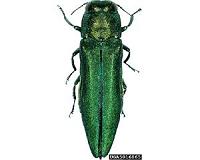 |
Seattle WA (SPX) Apr 29, 2011 The 25-story construction crane used since 1995 to investigate such things as how Pacific Northwest forests absorb carbon dioxide, obtain sufficient water and resist attacks by pests and diseases is being pruned back to just the tower. The Wind River Canopy Crane, located in a 500-year-old forest near Stevenson in southwest Washington, has been operated cooperatively by the University of Washington, the Forest Service's Pacific Northwest Research Station and the Gifford Pinchot National Forest. The partners say the jib - the arm of the crane - is being removed because the Forest Service faces budget shortfalls and replacement parts for the crane are becoming more difficult to obtain. Funding for the crane's operation has largely come from the station's budget. The jib will be removed when money is available, possibly this summer. Gone will be the ability to carry a gondola with researchers and instruments from the bottom to the top of trees as tall as 220 feet in a 560-foot circle of old-growth forest. The Wind River crane has the farthest reach of any of the nine forest canopy research cranes operating in the world today. Remaining will be the 230-foot tower with sensors that collect data about how the carbon dioxide is absorbed and released by the forest, work under way since 1999. Because of the crane, the UW and the Forest Service have one of the world's longest, continuously collected data sets of carbon flux from a forest, according to Jerry Franklin, UW professor of forest resources, who was the prime mover in the 1990s for landing the $1 million project. The carbon flux data are important as policymakers and citizens consider how to manage forests to maximize the amount of carbon they hold, he said. Work at the crane site produced some of the first data to substantiate what Franklin and other scientists suspected in the 1980s: that old-growth Douglas fir forests weren't emitting more carbon than they were absorbing. "Data collected at the crane site revealed that old growth forests are a sink for carbon," Franklin says. A growing number of partners, ranging from the National Oceanic and Atmospheric Administration to the Smithsonian Institution Global Earth Observatories, count on carbon flux and isotope data being collected at the Wind River facility from the tower. Recently the site was chosen as the Pacific Northwest core site for the National Ecological Observatory Network, known as NEON, a major new initiative of the National Science Foundation. The crane has facilitated other significant scientific discoveries, Franklin says, including seminal research on the structure of forest canopies, physiology of northwestern tree species, carbon and water cycles in forests, forest productivity and health, and the contributions of forest canopies to biodiversity, including birds, bats and insects. Researchers and students using the crane have generated more than 250 scientific publications. The crane has, for example, enabled Pacific Northwest Research Station ecologist Rick Meinzer to study how very tall trees get the water they need to survive centuries of environmental extremes. During annual cycles of summer drought, trees rely on internal water storage to stabilize the supply of water to foliage high in the canopy, and on their deep roots to bring water close to the surface to feed shallow roots that might otherwise die every summer. "Research using the crane has provided important insights about the factors that limit maximum tree height and why height growth slows drastically as a tree becomes taller," Meinzer says. "The tower will continue to be part of the nationwide network for continuous camera observation of changes in the timing of events such as leaf emergence and senescence, which are being influenced by climate change. Camera images are updated continuously and are available to both scientists and the public through websites." The tower site and experimental forest also will continue to provide educational opportunities for high-school and college students focused on forest ecology, population dynamics and functions such as the cycling of carbon, water and nutrients.
Share This Article With Planet Earth
Related Links Crane homepage NEON, National Ecological Observatory Network Forestry News - Global and Local News, Science and Application
 Developing biocontrols to contain a voracious pest
Developing biocontrols to contain a voracious pestWashington DC (SPX) Apr 28, 2011 U.S. Department of Agriculture (USDA) scientists are playing a key role in efforts to contain the emerald ash borer's destructive march through the nation's forests. Researchers with USDA's Agricultural Research Service (ARS) are testing a fungal pathogen that could be used as a biocontrol, along with the release of non-stinging wasps that are the beetle's natural enemies. Wasps have been ... read more |
|
| The content herein, unless otherwise known to be public domain, are Copyright 1995-2010 - SpaceDaily. AFP and UPI Wire Stories are copyright Agence France-Presse and United Press International. ESA Portal Reports are copyright European Space Agency. All NASA sourced material is public domain. Additional copyrights may apply in whole or part to other bona fide parties. Advertising does not imply endorsement,agreement or approval of any opinions, statements or information provided by SpaceDaily on any Web page published or hosted by SpaceDaily. Privacy Statement |